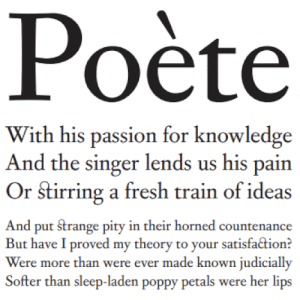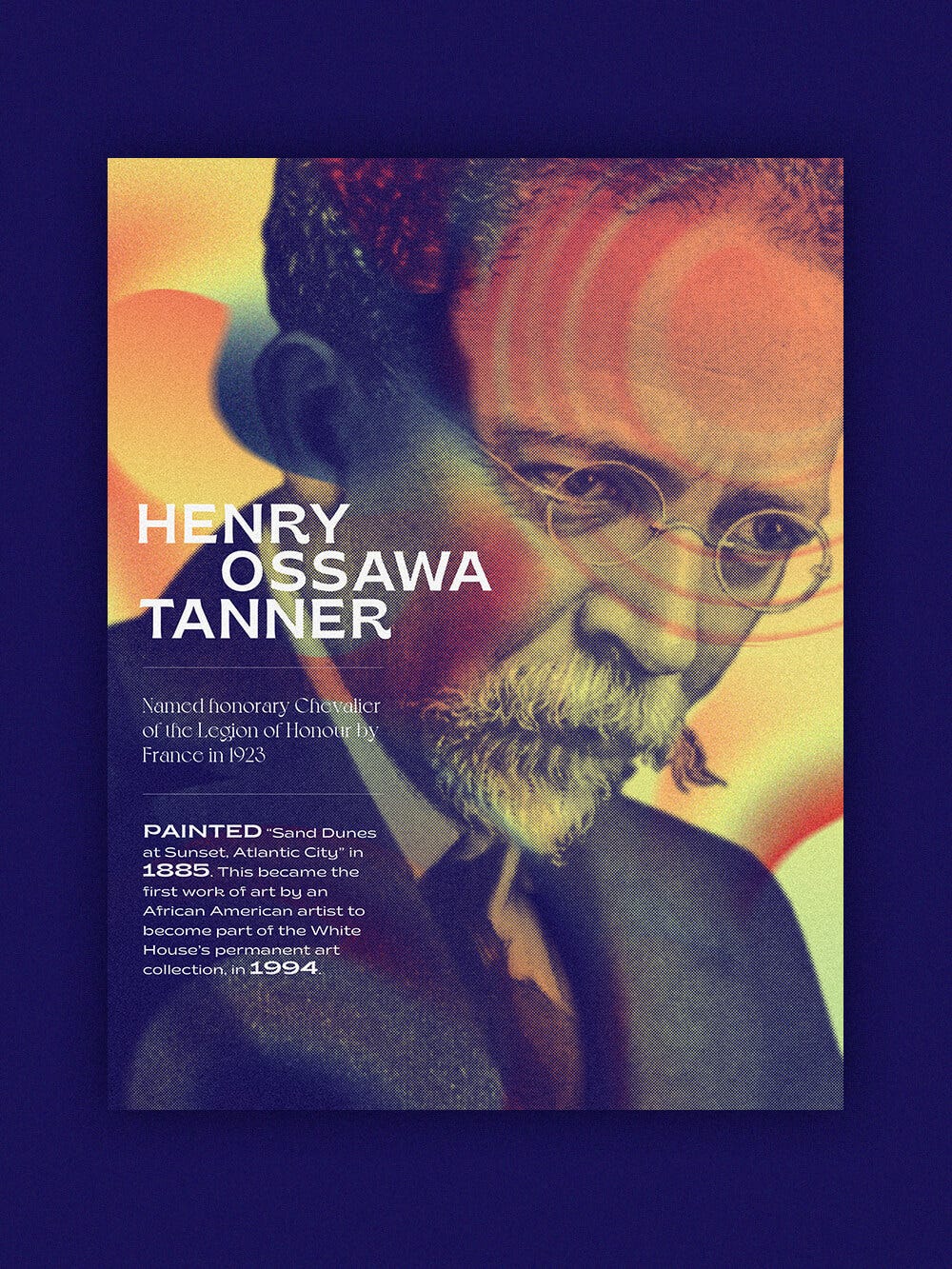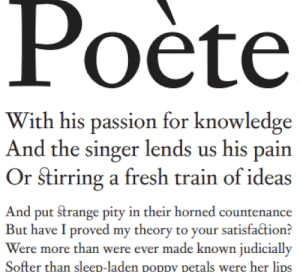Black Is Agency
Welcome to issue #19! 🏳️🌈
A design colleague of mine living in London was really excited to share the results of his Ancestry.com DNA test this week. With parents who are Scottish and Irish, I was surprised when he wrote in our team's Slack channel, “Just found out that I’m 11% Nigerian!” Then he posted a map of the world with accent colors on the few countries to which his DNA can be traced.
Turns out he’s 19% African with genetic ties to Nigeria, Ghana, Ivory Coast, and also Mali. It was both a fun revelation and a great affirmation of what we’ve been sharing in Black To School. Each one of us has roots in and has benefited from the contributions of Africans. And we’re all members, some more recently realized than others, of the African Diaspora.
Black To School celebrates Black people and Black contributions around the world. The “Why?” that powers our mission is simple. “Our ancestors invented the table that the world now sits at. It’s time to not just claim our seat, but to set the agenda.”
A special thanks 🙏🏾 to the “Golden Griots'' (or top sharers) below for spreading the word about last week’s article. Please keep sharing stories of #blackcontributions and our collective history within your networks!
Janet D.
Errol S.
Fayeon F.
Pamela W.
Saamra G
Jen C.
In this issue, we’ll:
Understand how we rebrand and reshape perceptions about Africans and the African Diaspora.
Get what we need to see beyond stereotypes and access the full story of us.

Pattern Recognition
Collective Member: Kristen Williams
Just by saying the simple words “Black father”, “Black woman”, “Black girl” without knowing anything else, for most of us, there are immediate assumptions, associations and even emotional reactions. As people, we infuse meaning in the color black based on upbringing, education, media, and societal influence.
The human mind takes lots of “mental shortcuts” to process the overwhelming amount of information that we interact with every day. In fact, one of the abilities that gave homo sapiens, our early ancestors, an evolutionary advantage over other hominids is the ability to recognize and differentiate a wide variety of complex and symbolic patterns.
Whether we were in search of prey or in flight from predators, for over 200,000 years we have been hard-wired to use seemingly related data to make snap judgements. Grouping and responding to people based on appearance, ethnicity, and culture is another example of this natural reaction.
Although categorizing people is something that the brain just does, making “positive and negative” associations and “superior and inferior” value judgements based on racial differences is a practice that is entirely socially engineered. Race classifications are a societal construct, designed to serve and protect the economic and cultural interests of those who created them.
Heuristics and historical context help explain the one dimensional, flawed brand narrative of Black people. These misperceptions don’t accurately reflect the nature, talents, interests, accomplishments, and potential of Africans and the African Diaspora. The danger of stereotypical thinking is that it is an “overreaction to information that generates or confirms a stereotype, and [an] under reaction to information that contradicts it.”
Very few people would argue with the notion that no two people are exactly the same. And yet, out of sheer pragmatism, we often have to group and relate to people as if they were. The question is how much of any person’s real identity, including personality, presenting behavior and background can we afford to ignore in favor of our own assumptions and perceived similarities that we see or feel.
What transformative experiences and knowledge will we continue to miss out on if we don’t take the time to really understand one another by challenging our own biases?
Black by design.
We have been intentional at Black To School about developing a brand that uses thematic content and imagery to positively influence attitudes and actions towards Black people. What we perceive about each other, when thoughtfully curated, ultimately becomes our reality of one another.
There are five components to the Black To School brand aesthetic: (1) Design Framework, (2) Logo Mark, (3) Issue Art, (4) Typography, and (5) “Black Is...” Theming. The following is some background and context on the role that each plays in shaping how our story is told.
Design Framework - The night sky inspired our design framework. The contributions of Africans and the African Diaspora are like the stars in the universe. The stars are innumerable. You can see more and more stars as your observation lens improves.
The naked eye can only see about 9,096 stars across the sky in an evening. While with binoculars, telescopes or other astronomical instruments that can magnify and measure sound, heat or light our field of view expands. In the end, we will never be able to directly see all of the stars in the universe. However, we know that there are billions of trillions of luminous balls of light that brighten our world.
In much the same way, if you limit your field of inquiry to what most of us are taught in school regarding Black culture and contributions, you will miss a lot. You will learn very little about the African origins of the human race, the first mathematical instruments, the first spoken and written languages, the women who sent the first humans to the moon, the institutions that are graduating the most Black doctors and scientists, the origins of sustainable technology and much more.
However, with the Black To School perspective, you will get a more well-rounded story of human progress and potential from ancient times to present day. We organize information, much like constellations, by identifying and connecting contributions that show a specific pattern of success and impact. For example, for the subject of wealth, we connected the wealthiest human to have ever lived to the concentration of wealth built by Black entrepreneurs on Black Wall Street to the board directors and corporate executives building wealth in corporate America to, finally, the wealth that Black personal financial advisors now help everyday people build. For the subject of language, we linked ancient language to modern poetry and the most popular music genre of hip hop to the sci-fi phenom that is Afro-futurism.
We have created four luminous narratives around wealth, analytics, poetry and innovation that showcase particular constellations of Black excellence. Rest assured, four is just the beginning, as we continue to develop this mental map of Africans and the African Diaspora, we will add more examples to each constellation that further informs where we have been, where we are today, and where we are going in the future.
Logo Mark - The Black To School logo was designed with two things in mind: (1) Make the contributions of Black people everywhere our central focus. The bold, capitalized “B” in the center of a black circle is the symbol of our story, which sits at the center of the world (and human existence). (2) Take the data and facts surrounding Africans and the African Diaspora in the past and present and use it to tell a compelling, educational story. The book-shaped, capitalized “B” along with the bookmark icon represent the acquisition and sharing of knowledge.
Issue Art - We incorporate art in three ways in each issue. In all cases, we believe these images reinforce the key messages in the article and appeal to those who need a visual (even more than quantitative data) to believe and process the story being told. (i) We include art in the header of each issue which is intended to provide a visual teaser of the topic. (ii) We include a primary image in the body of the issue to share a real world example of the people/places/practices/products that we showcase in the piece. (iii) We include an abstract work of art from an emerging artist to celebrate the creative minds who have wrestled with the specific brand of excellence that connects all of the issues within a given theme as we have done with the themes of wealth, analytics, language, innovation and agency. This abstract art is intended to break up the issue narrative by both delighting and challenging you.
Typography - The type font that we use on Black To School was invented by the African American typographer Joshua Darden. Darden is a typographer/iconographer, designer, lecturer and entrepreneur. He is the Founder & Designer Emeritus of the Darden Studio, which markets and sells the typefaces of independent typographers/iconographers to some of the most well-known brands in the world.
Of course, Joshua is not alone. As with everything that we do at Black To School, we are committed to sharing with you the critical mass of Black talent that operates in every area of society. Here is a list of 32 Black Type Designers who have worked and earned money from designing their own typefaces.
“Black Is...” Theming - We have referenced the use of themes as part of our “night sky” and “constellation” Design Framework. This answers the question of how we develop our monthly theming. Next, we’ll focus on the “What?” and “Why?” behind our theming approach.
The What? A Black To School theme is typically a significant field of knowledge, practice or industry. We have covered themes ranging from wealth and innovation to language, analytics, and agency. The theme is broad enough to group many different, yet related examples of African and African Diaspora achievement. For example, we did this with our explorations in the theme of innovation. We shared information about the first human-controlled fires, the Black inventors who reinvented the home, the African American & African pioneers in personal computing, as well as the earliest forms of sustainable technology in the world. With each theme, we develop a series of issues that tell the story of how Black people have and continue to contribute to human progress in that area.
The Why? At Black To School, we understand that we are what we perceive. And our perceptions may be shaped by the narratives we consume. If the dominant narrative regarding Black people is focused on slavery, colonization, civil rights, social justice and racial healing, then that may color our perception of Africans and the African Diaspora.
We know that there is so much more to the story of Black people and culture in human history. The “Black is…wealth, innovation, analytics, language, agency…” theming helps to make new brand associations that represent a much more full and representative picture of our contributions and role - then and now.

Brand Promise
Depending on who you ask, there are an infinite number of ways in which we prefer to be addressed. More important than the labels and classifiers is what meaning we give them and how much we let them dictate our beliefs about and experience of each other. Ultimately, Black To School will measure our success by how effective we are at socializing a wide variety of positive associations with the brand (backed by data and compelling storytelling) that shape the default perceptions of Africans and the African Diaspora. Black is a brand that is large and varied; we contain multitudes.
🛠️ The Black To School Toolkit
Now What? Dig Deeper with Friends, Family, and Others.
Want to learn more about social categorization? Click here to learn about why we classify and stereotype people, which influences how we treat each other and perceive ourselves. Got Video? Watch this TED talk by Chimamanda Ngozi Adichie about the danger of a “single story”.
Ready to share the full picture with your kids? Check out this fun, self-study platform that provides interactive lessons on Black Love, Black Glory, Black Excellence, Black Genius and more for toddlers, pre-teens, teens, and up.
Let’s rethink our word choices! Here are a few words that we use everyday that reinforce status quo narratives about the colors “black” and “white”.
Interested in how we are all biased and can change? Hear directly from Jennifer Eberhardt, a social scientist, researcher, author and mom, on this topic. Want More? Buy her groundbreaking, best-selling book Biased.
⌛ The Black To School Timeline
Black Is A Brand That Is Large And Varied; We Contain Multitudes.
First, we shared an overview of our Editorial Process The Point of View: Reframing the Conversation, understanding and curating our story is one of the most powerful ways that we exercise our agency.
Next, we revealed our Research Methods. The Practice: Showcasing the Evidence, finding and vetting the data and sources is all about going deep and identifying patterns with trusted sources.
This week, we showcase our Design Philosophy. The Brand: Style Guide, there is intention and Black creative talent embedded in every aspect of our appearance and experience.
Next week, we reflect on our Collective Model. The Community: The Contributors, the ubuntu principle is at the heart of our distribution strategy and the network of domain experts who work with us each month to tell our full story to the world.
About This Week’s Contributor
Kristen Williams
Hello! I’m Kristen Williams. I am a Product Designer with a passion for using design to improve lives by providing support for personal agency and democratizing access to information. I joined the Black To School Collective with the hope of spreading uplifting and empowering messages, regarding what it means to be Black.





